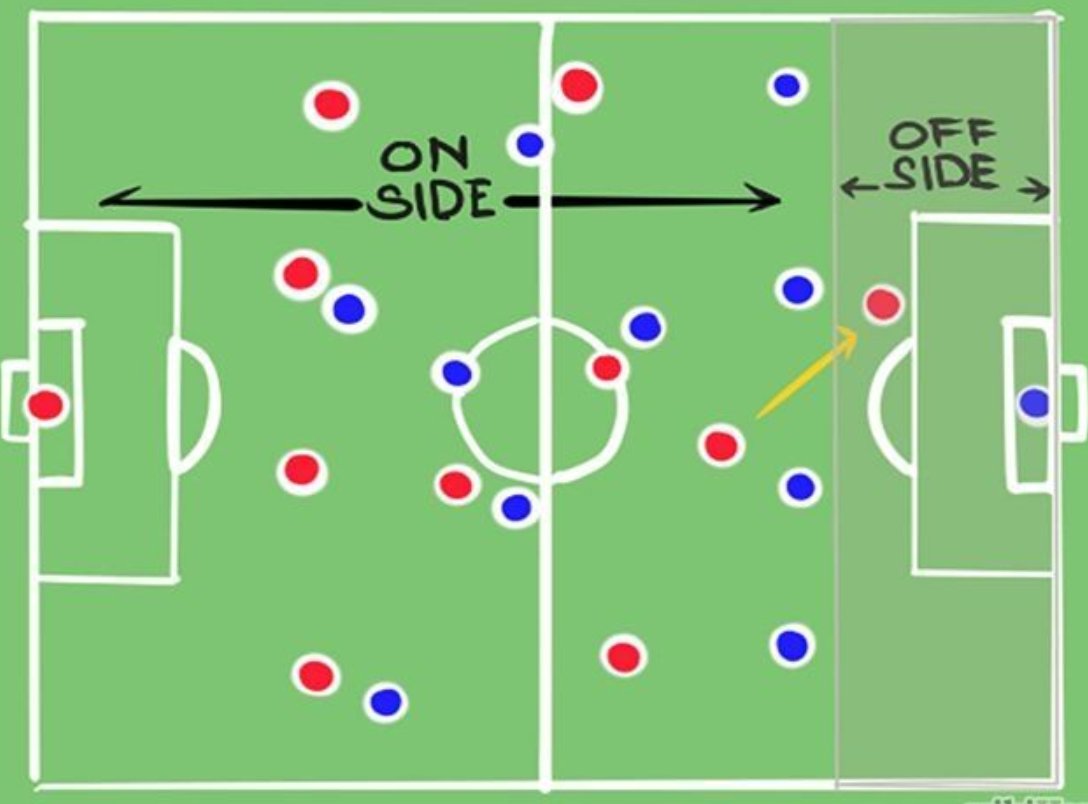It may seem like a really simple game where the only rule is that you can’t touch the ball with your hands, but soccer definitely has some freaky little rules that most people might find confusing or don’t even know about entirely.
I’ll go into some of these rules in this post and explain them so you won’t be blindsided the next time you play.
OFFSIDES
Offsides is probably the most famous rule in soccer that newcomers have completely no idea about. It essentially prevents a team from abusing break-aways or always hanging out on the opposing side of the field while waiting for long passes.
Essentially, the rule means that an offensive play cannot be closer to the opposing team’s goal line than both the ball and the last defender. From the FIFA rulebook, a player is ruled offside “the moment the ball touches or is played by one of his teammates.” This means that every part of a player, head, feet, toes, knees, fingers, etc., have to be in front of the last defender when the ball is passed to them.
If not, the play is immediately stopped and a free kick is giving to another team
The only exception is that a player cannot be ruled offsides if they’re receiving the ball from a throw-in, a goal kick, or a corner kick.

Figure 1: Image from https://www.thesoccerstore.co.uk/blog/youth-football/explain-offside-rule-children/
FREE KICKS and PENALTIES
How do we know when a foul results in either a free kick or a penalty? This is actually incredibly simple.
A penalty is awarded when a defender fouls an opponent within their own 18-yard box. A free-kick is awarded when a foul is made anywhere else if on the field.
Free-kicks can also vary in form too. There are indirect and direct free kicks. Indirect kicks mean that once the ball is kicked, it must touch another teammate’s body before entering the goal. Otherwise, the goal wouldn’t count. A direct kick just means that the ball can be directly kicked into the goal without having to touch anyone else.
RULES ON THE GOAL LINE AND BOUNDARIES
A lot of people get confused about how much of a ball needs to be over the line for it to be considered out of bounds at the edges of the field or a goal at the goal lines.
The rule according to FIFA is that the whole entirety of the ball must pass over the lin for it to be considered out of play or as a goal. The picture below describes this.
Figure 2: Image from https://www.rockbridgeunited.com/Default.aspx?tabid=598867
Additionally, a little thing most people don’t know is that players themselves do not apply to this rule. A player can be standing out of bounds while in possession of the ball, and it will not be ruled out of bounds. The same applies to a goalkeeper. A goalkeeper may have his body planted beyond the goal line, but as long as he holds the ball outside, there is no goal scored.
